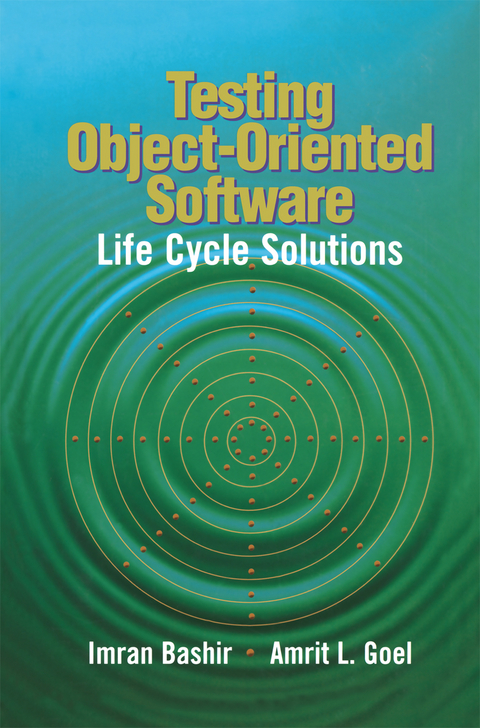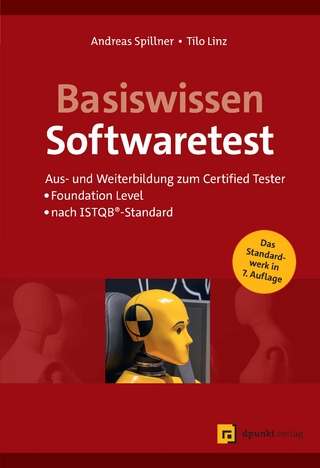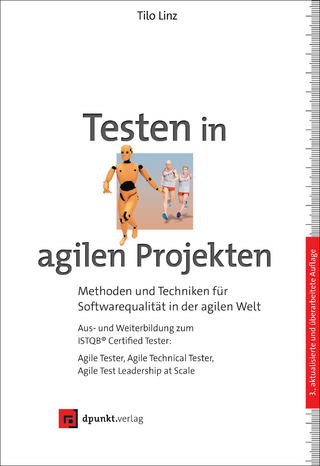
Testing Object-Oriented Software
Springer-Verlag New York Inc.
978-0-387-98896-2 (ISBN)
1 Introduction.- 1.1 Why a Book on Testing Object-Oriented Software?.- 1.2 Outline of Book.- 2 Software Process and Testing Models.- 2.1 Software Process Models.- 2.2 Object-Oriented Software Development and Testing Model.- 2.3 Summary.- 3 Impact of Object Orientation on Testing.- 3.1 Encapsulation.- 3.2 Information Hiding.- 3.3 Abstraction.- 3.4 Inheritance.- 3.5 Reuse.- 3.6 Testability of Object-Oriented Systems.- 3.7 Summary.- 4 Requirements Testing.- 4.1 Objective.- 4.2 Approach.- 4.3 Activities.- 4.4 Resources.- 4.5 Effort.- 4.6 Acceptance Criteria.- 4.7 Summary.- 5 Design Testing.- 5.1 Objective.- 5.2 Approach.- 5.3 Activities.- 5.4 Resources.- 5.5 Effort.- 5.6 Acceptance Criteria.- 5.7 Summary.- 6 Base Classes Unit Testing.- 6.1 Objective.- 6.2 Approach.- 6.3 Activities.- 6.4 Resources.- 6.5 Effort.- 6.6 Acceptance Criteria.- 6.7 Summary.- 7 Derived Classes Unit Testing.- 7.1 Test Procedure.- 7.2 Analysis.- 7.3 Summary.- 8 Testing C++ Special Features.- 8.1 Static Data Members.- 8.2 Function Pointers.- 8.3 Structs as Data Members.- 8.4 Nested Classes.- 8.5 Member Access Controlaccess control.- 8.6 Composite Classes.- 8.7 Abstract Classes.- 8.8 Summary.- 9 Code Reviews.- 9.1 Objective.- 9.2 Approach.- 9.3 Activities.- 9.4 Resources.- 9.5 Effort.- 9.6 Acceptance Criteria.- 9.7 Language-Independent Errors Checklist.- 9.8 Object-Oriented Errors Checklist.- 9.9 Summary.- 10 Integration Testing.- 10.1 Objective.- 10.2 Approach.- 10.3 Activities.- 10.4 Resources.- 10.5 Effort.- 10.6 Acceptance Criteria.- 10.7 Summary.- 11 Integrated-System Testing.- 11.1 Objective.- 11.2 Approach.- 11.3 Activities.- 11.4 Resources.- 11.5 Effort.- 11.6 Acceptance Criteria.- 11.7 Summary.- A SampleStatistic Class Source Code.- A.1 Header File.- A.2 Source File.- B SampleHistogram Class Source Code.- B.1 Header File.- B.2 Source File.- C PriorityQueue Class Source Code.- C.1 Eiffel Implementation.- C.2 C++ Header File.- C.3 C++ Source File.- D Algorithms for Drawing MaDUM.- D.1 Base Class MaDUM Algorithm.- D.2 Derived Class MaDUM Algorithm.- E Test Data Adequacy Axioms.- E.1 “Obvious” Axioms.- E.1.1 Applicabilityapplicability.- E.1.2 NonExhaustive Applicability.- E.1.3 Monotonicity.- E.1.4 Inadequate Empty Set.- E.1.5 Renaming.- E.1.6 Complexity.- E.1.7 Statement Coverage.- E.2 “Not-so-obvious” Axioms.- E.2.1 Antiextensionality.- E.2.2 General Multiple Change.- E.2.3 Antidecomposition.- E.2.4 Anticomposition.- References.
| Zusatzinfo | XIX, 209 p. |
|---|---|
| Verlagsort | New York, NY |
| Sprache | englisch |
| Maße | 155 x 235 mm |
| Themenwelt | Informatik ► Software Entwicklung ► Qualität / Testen |
| ISBN-10 | 0-387-98896-3 / 0387988963 |
| ISBN-13 | 978-0-387-98896-2 / 9780387988962 |
| Zustand | Neuware |
| Haben Sie eine Frage zum Produkt? |
aus dem Bereich


